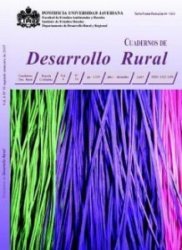Abstract
El diseño del modelo ecotecnológico (ME) para la producción artesanal se desarrolló a partir del análisis de dos casos: El primero, la comunidad artesanal del municipio de Galapa, en el departamento de Atlántico, en donde habitan artesanos expertos en el oficio de talla en madera; y elaboran máscaras en ceiba roja4 . El segundo caso, la comunidad artesanal de Usiacurí, la cual se localiza a 80 kilómetros de Barranquilla; los artesanos, elaboran artesanías tejiendo palma de iraca lo que les ha permitido incursionar en el mundo de la moda. El ME identifica y desarrolla la capacidad de los grupos artesanales, para encaminar su conocimiento tradicional al uso sostenible de recursos naturales del ecosistema regional y estimular la racionalidad ambiental en los procesos productivos artesanales. De esta manera el ME, se soporta en una estructura “tecnocultural artesanal” (QUINTANILLA. 1998, p. 30) relacionando variables de productividad cultural, tecnológica y cultural que se manifiestan en las comunidades artesanales. El ME describe la complejidad manifestada en las relaciones de los diversos agentes que intervienen en la dinámica cultural, los procesos productivos artesanales y la relación con el uso de los recursos naturales.Cuadernos de Desarrollo Ruralis registered under a Creative Commons Attribution 4.0 International Public License. Thus, this work may be reproduced, distributed, and publicly shared in digital format, as long as the names of the authors and Pontificia Universidad Javeriana are acknowledged. Others are allowed to quote, adapt, transform, auto-archive, republish, and create based on this material, for any purpose (even commercial ones), provided the authorship is duly acknowledged, a link to the original work is provided, and it is specified if changes have been made. Pontificia Universidad Javeriana does not hold the rights of published works and the authors are solely responsible for the contents of their works; they keep the moral, intellectual, privacy, and publicity rights.
Approving the intervention of the work (review, copy-editing, translation, layout) and the following outreach, are granted through an use license and not through an assignment of rights. This means the journal and Pontificia Universidad Javeriana cannot be held responsible for any ethical malpractice by the authors. As a consequence of the protection granted by the use license, the journal is not required to publish recantations or modify information already published, unless the errata stems from the editorial management process. Publishing contents in this journal does not generate royalties for contributors.


